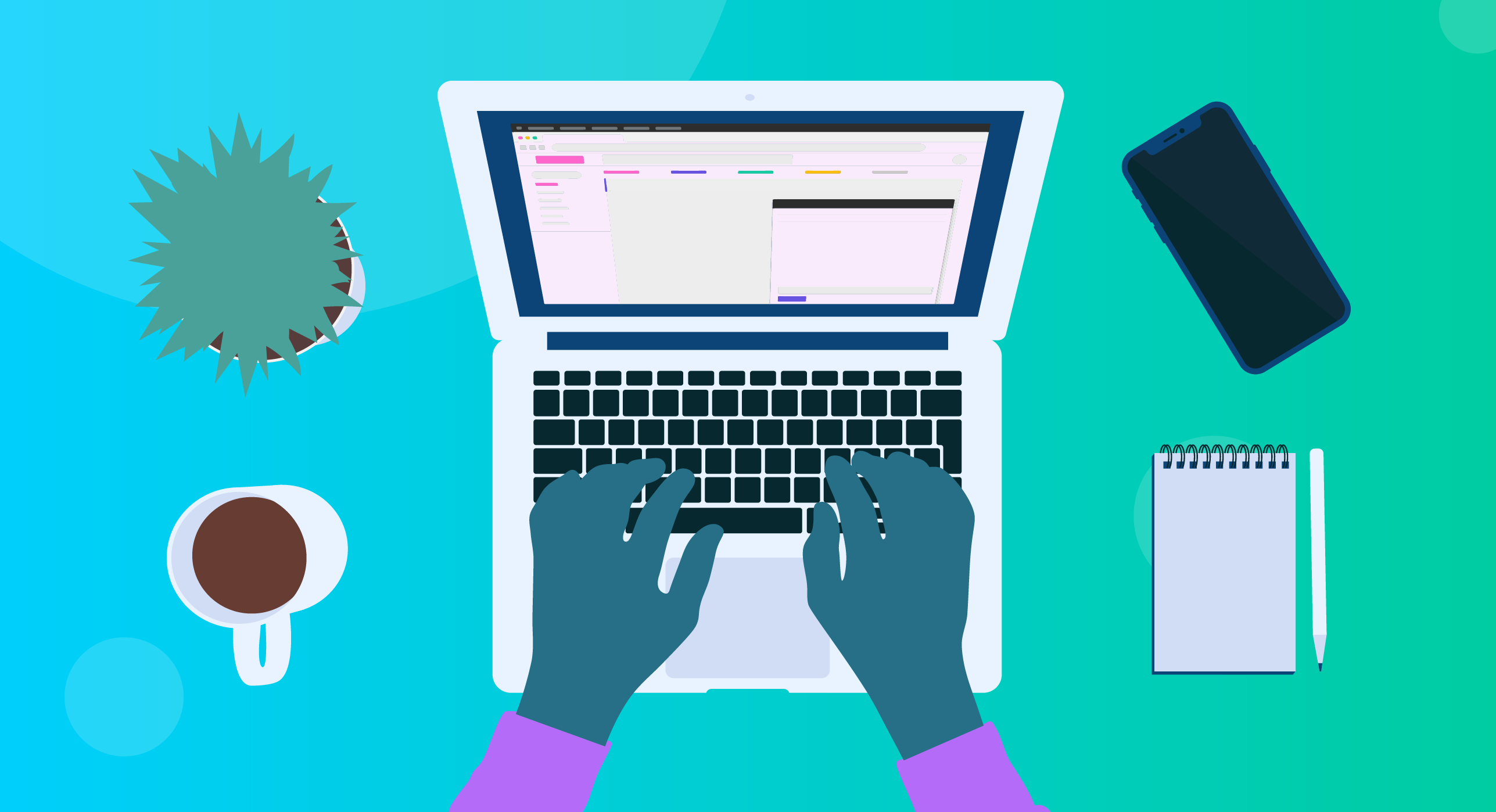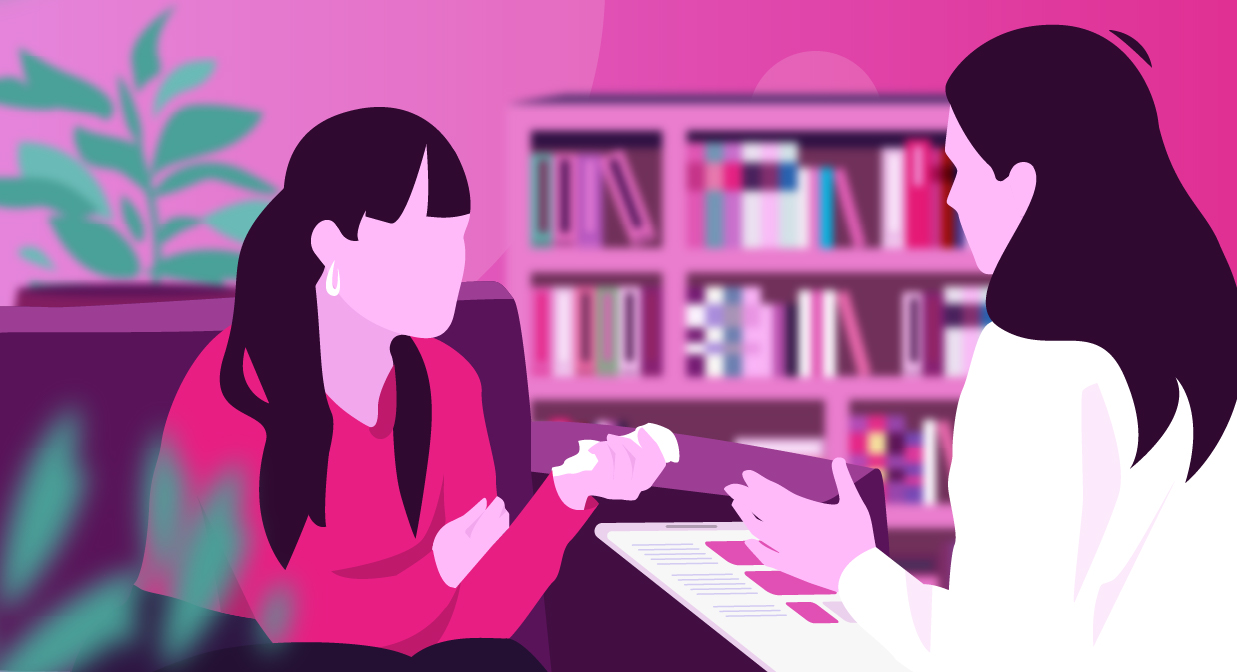The pandemic has taught many of us that we can work remotely— however, “remote” means so much more than just sitting on the couch with a laptop, especially for medical professionals. From physios to psychologists, health workers have increasingly turned to the technological wonders of telehealth. Its use among medical professionals skyrocketed during the initial spread of Covid-19 amidst fear of viral spread and national restrictions, and although the pendulum has swung back in recent months, it’s one trend that is set to stay.
If you’re part of the telehealth movement, relying on video calls for client appointments, there are specific things you can do to create a calmer space to put both you and your clients at ease.
Not sure where to start? Here are a few tips and tricks to help:
1. Welcome to My Office
It’s been just a little over four years since “BBC Dad”, Professor Robert Kelly’s live Zoom interview about South Korean politics was gate-crashed by both his kids. The clip went viral at the time, quite possibly because we identified how easily this could have happened to us.
To ensure this doesn’t happen to you; it’s important that your desk is well-positioned. If you lack access to a dedicated office at home with a door that locks, make space in an alternative room offering a higher level of privacy than the shared spaces in your house. This could be your lounge or living room.
If a private room is not possible, avoid sitting in front of doorways to prevent any accidental guest appearances. As an extra precaution to minimise disruptions, explicitly remind others around you that you will be on a virtual meeting with a client. You don’t want to have to keep locking yourself in the bathroom or a cupboard for some peace and quiet during a virtual meeting. And lastly, make sure your desk is positioned close to a plug point to avoid losing power mid-call.
Think it won’t happen to you? This video may be one of the best things to come out of lockdown, and it highlights how carving an office space for yourself is non-negotiable if you want to maintain a professional appearance.
2. Clear Out the Clutter to Spark Joy
To create a visually appealing background for your telehealth meetings, clear out anything from behind you in the camera frame that will come across as too overly busy or chaotic.
Health visits are already daunting for many people, so it’s crucial for your clients to have peace of mind and to feel at ease during the call. Having personal photos, artwork, and books in your background may work in some cases but do your best to curate and organise. Background clutter is distracting and comes across as disorganised and unprofessional. Remove any clothes hanging up behind you. Close the cupboards and straighten the picture frames. Go ahead and do your best Marie Kondo impersonation to spark a bit of joy among your clients.
Remember, it might be best to pull your desk away from the wall so that you have the wall behind you.
3. The Nurturing Effects of Nature
If you aren’t able to sit in front of a neutral background or would like to include a few items into the video frame, remember to keep it subtle. Layer in some artwork and add a few books, or better yet, add in some greenery. Studies show that plants can help reduce stress, and adding a view of your garden or simply bringing a few houseplants into the frame can help nurture a feeling of calm, but also of life and vitality.
Reign yourself in from going full Jumanji, and opt for something subtle like a fern, palm, or statement orchard. Just remember, your plants should, like you (and your clients), look happy and alive, so make sure they’re thriving. Having subtle items behind you during a two-way call makes for great conversation starters to keep your patient at ease.
4. Lights, Camera, Action!
During virtual video calls with clients and colleagues, the camera position, your body position, and lighting are all important factors to keep in mind. Stick to lighting with a high colour rendering index. It can make you look ten times better and clearer on-screen– yes, there’s a reason YouTube influencers look so good all the time–so invest in a good lamp or ring light.
If you’re fortunate enough to have access to natural lighting, make sure you are sitting with your face towards the window. Just remember to adjust the angle slightly as sunlight moves during the day. You should also test that the lighting in the room is not too bright. The easiest way to do this is by testing your camera before starting a call with a client. As for your camera, higher quality cameras also result in a better virtual background quality, so keep the lens clear from dust and smudge marks.
5. Know Your Tools: I am not a Cat!
When setting up your in-time video calls, expect to find yourself doubling up as a medical practitioner and an IT expert. While technology makes it possible to provide healthcare services from a distance, your professionalism and efficiency will rely heavily on the effectiveness of your tools.
After almost a year of epic Zoom fails, one that stands the test of time comes from Texas Attorney Rod Ponton spreading joy throughout the world with his emphatic declaration that he wasn’t a cat.
The incident also proves how important it is to do your homework and test out a range of video call software on the market, as well as checking your filters before connecting your video. Yes, this may all take a bit of time, but it’s time well-spent to save you a few headaches later on. Remember to perform a few test calls and keep in mind that the true linchpin of any work-from-anywhere setup is a fast and steady internet connection.
6. See it From Your Clients’ Perspective
If you’d like to level up on your remote calls with clients, take a step back and think about what you would like to see on a call with a healthcare professional. If you can put yourself in the clients’ shoes, you may come up with a slightly different approach.
Ideas include:
- If you see children in your practice, having a few toy dinosaurs on your desk can help open the conversation and put them at ease as they might not be comfortable talking to a computer.
- If branding is important to you, you could find subtle ways to add in elements like your company name or have some custom signage designed and printed.
- If you want to portray a neutral environment, check your background for personal items such as family photographs or pictures from your children.
- If you want to communicate your professional standing, make sure framed certificates of your qualifications are visible.
As humans, we make snap judgements all the time based on visual cues. Your background should reflect your profession, and, at the end of the day, not every health professional has a home or work office that’s always in a perfect, presentable condition at all times. If you can see your setup from your clients’ perspective, you’ll be one step closer to projecting a cohesive picture of who you are as a professional.
With telehealth set to stay for the long-haul, it’s worthwhile to invest some time and resources into creating a visually appealing telehealth setup. These 6 steps will help you prioritise and optimise your telehealth background, as well as (hopefully) helping you navigate the potential pitfalls of offering your services virtually. Because, and this is important to remember, you are not a cat.





